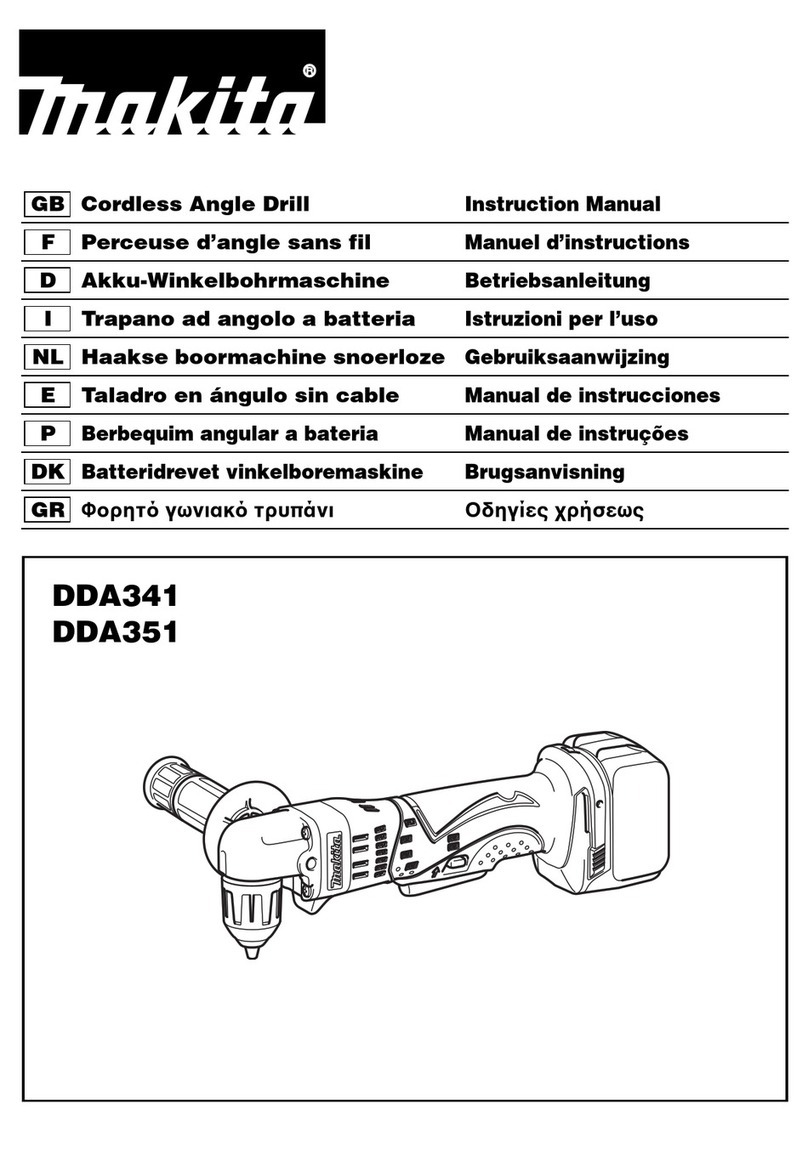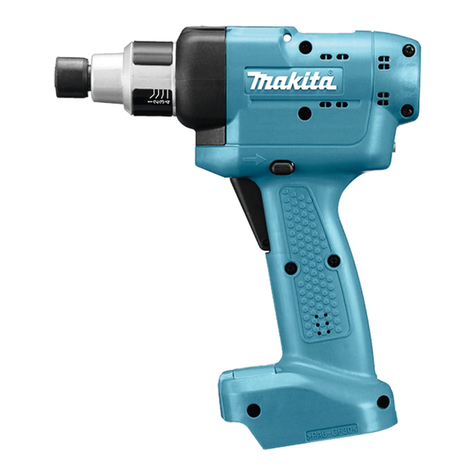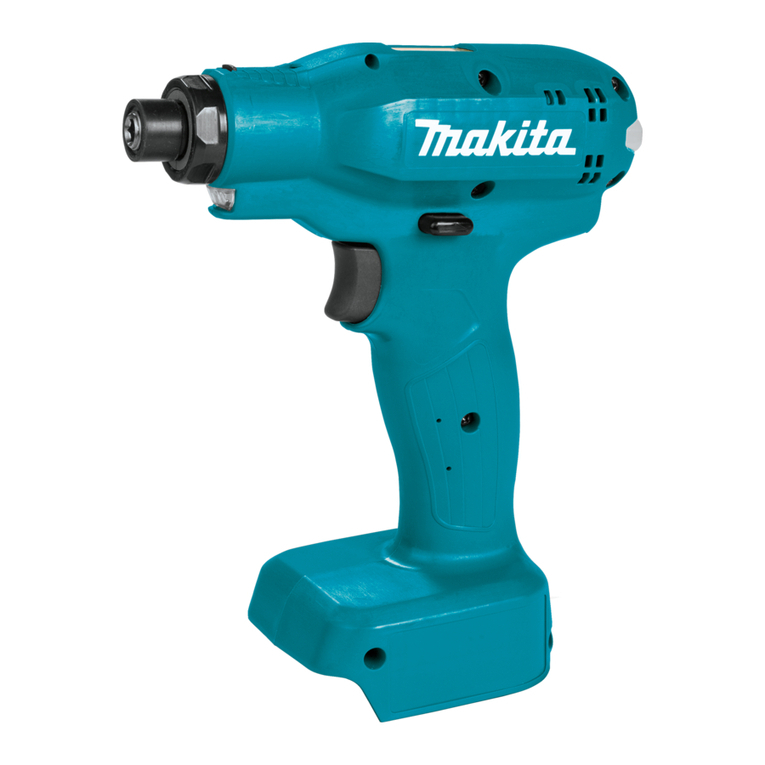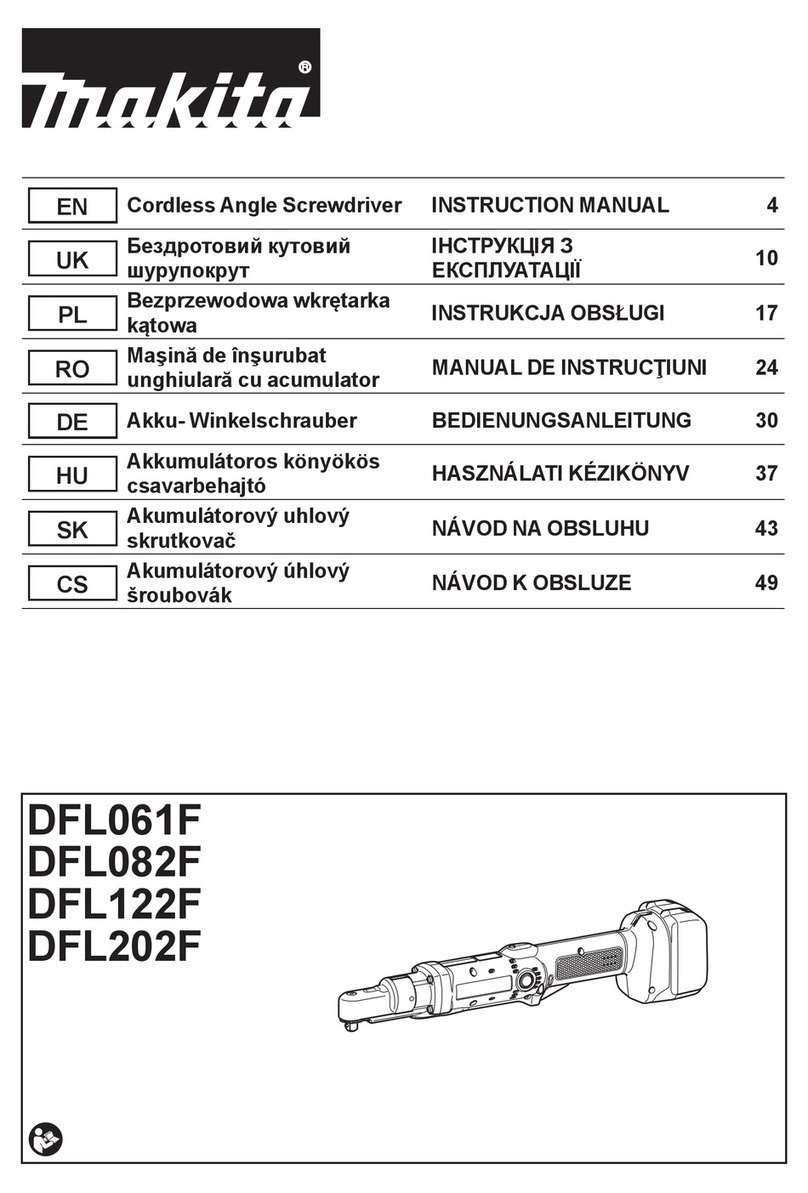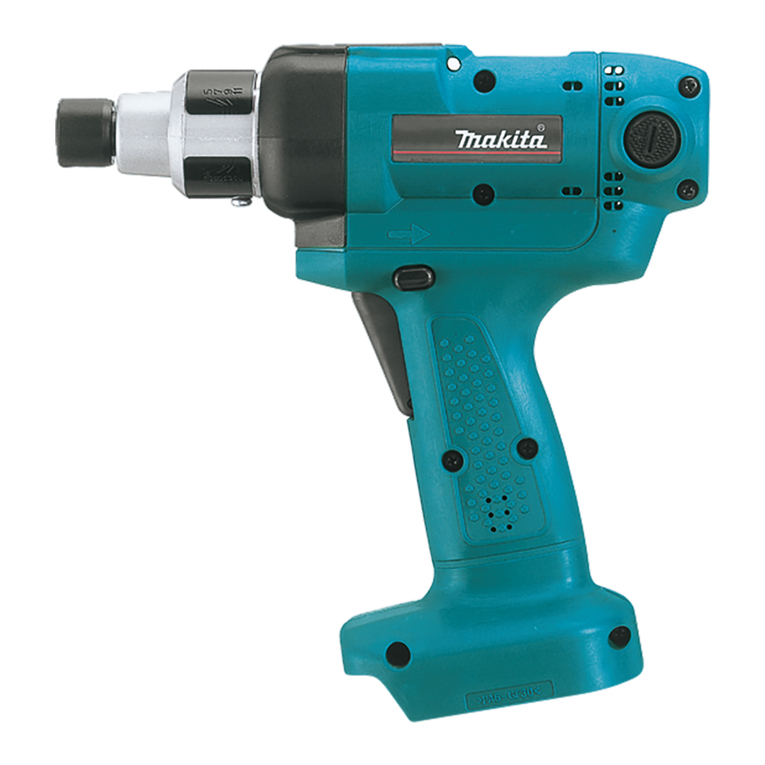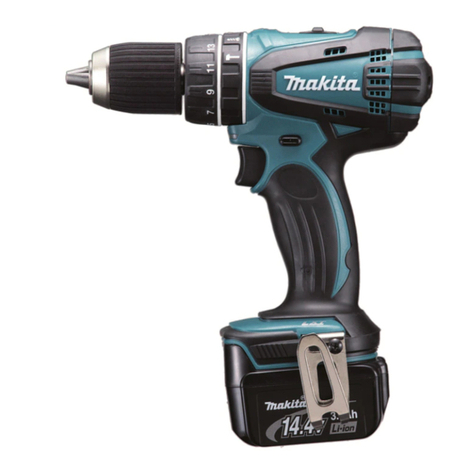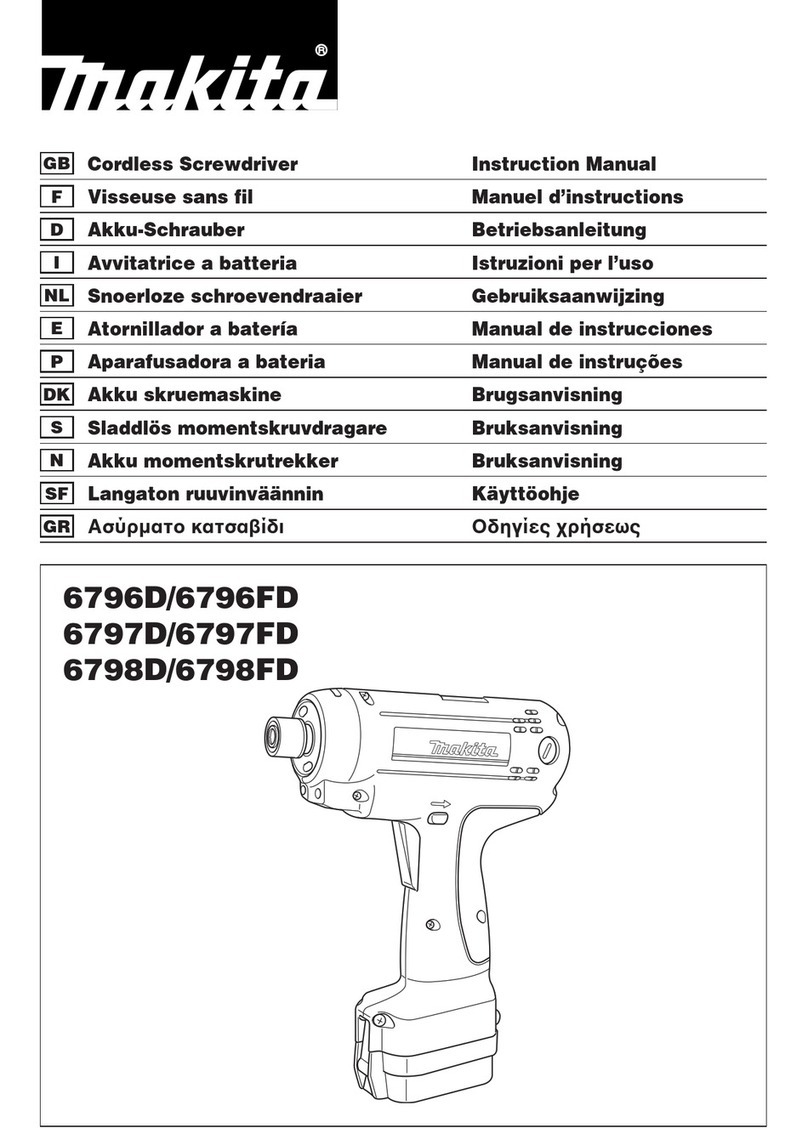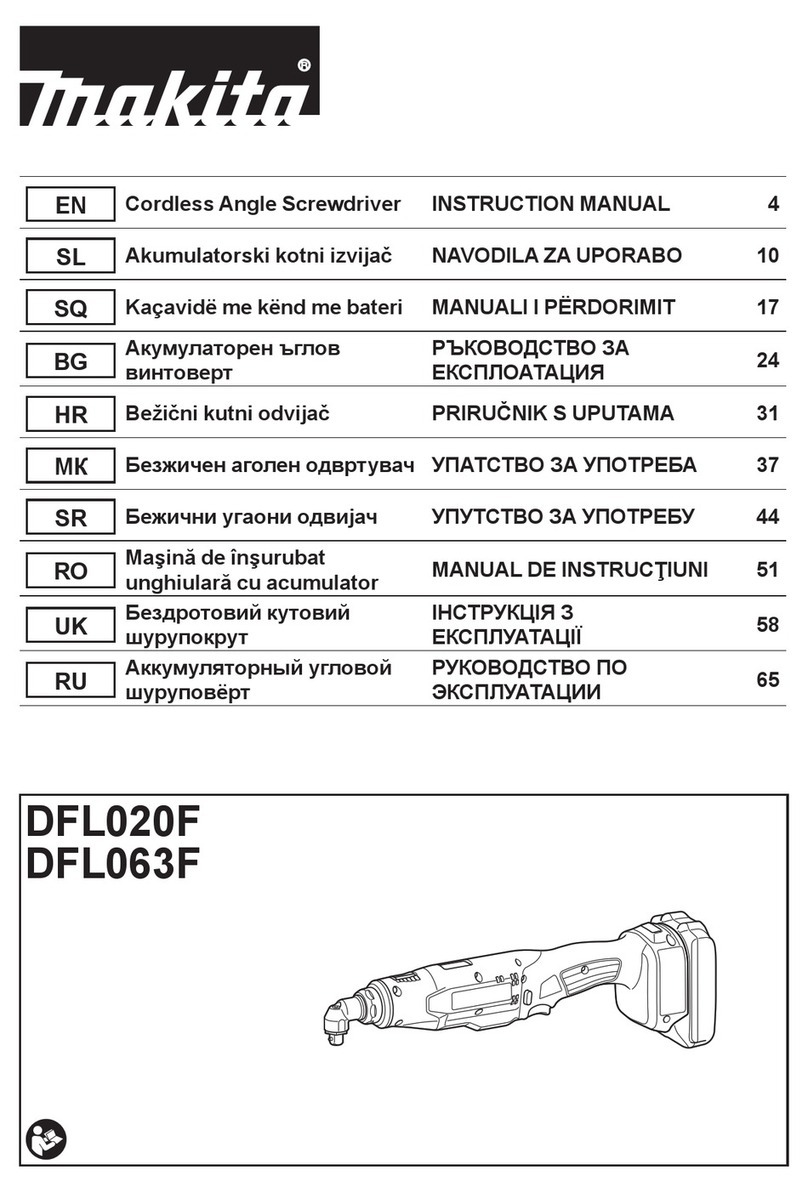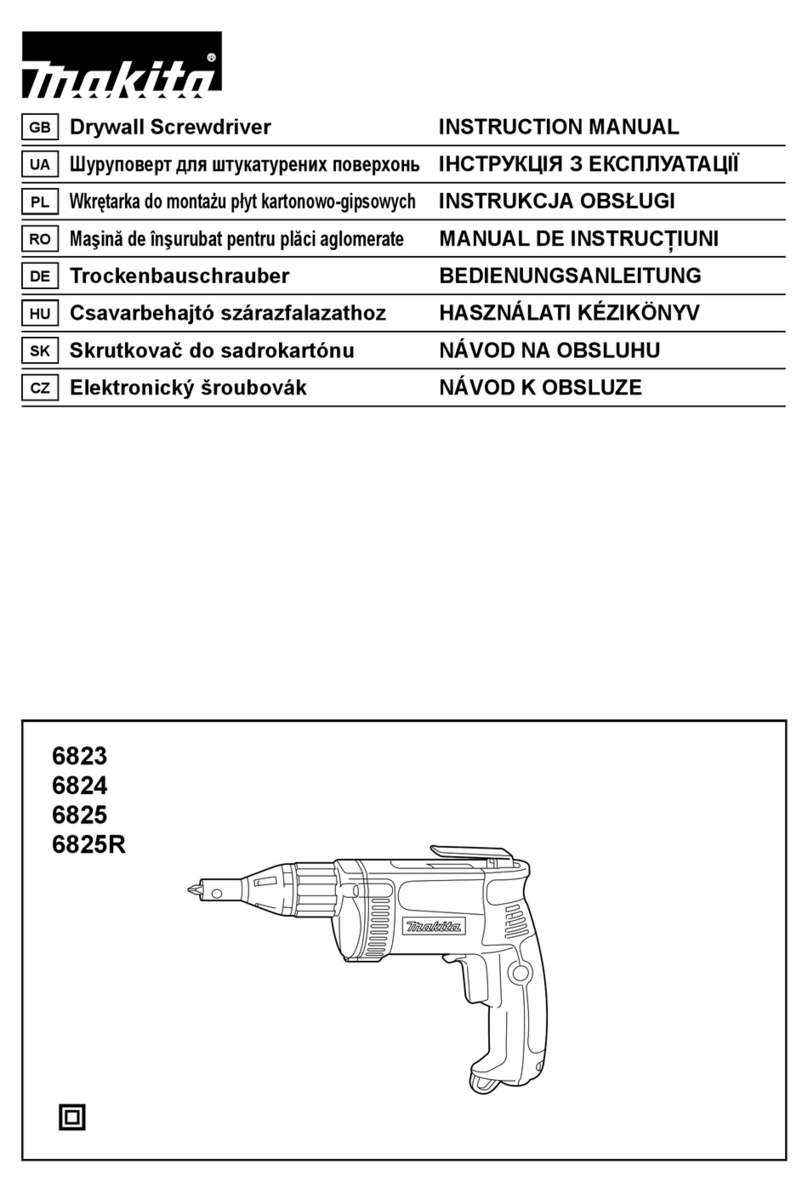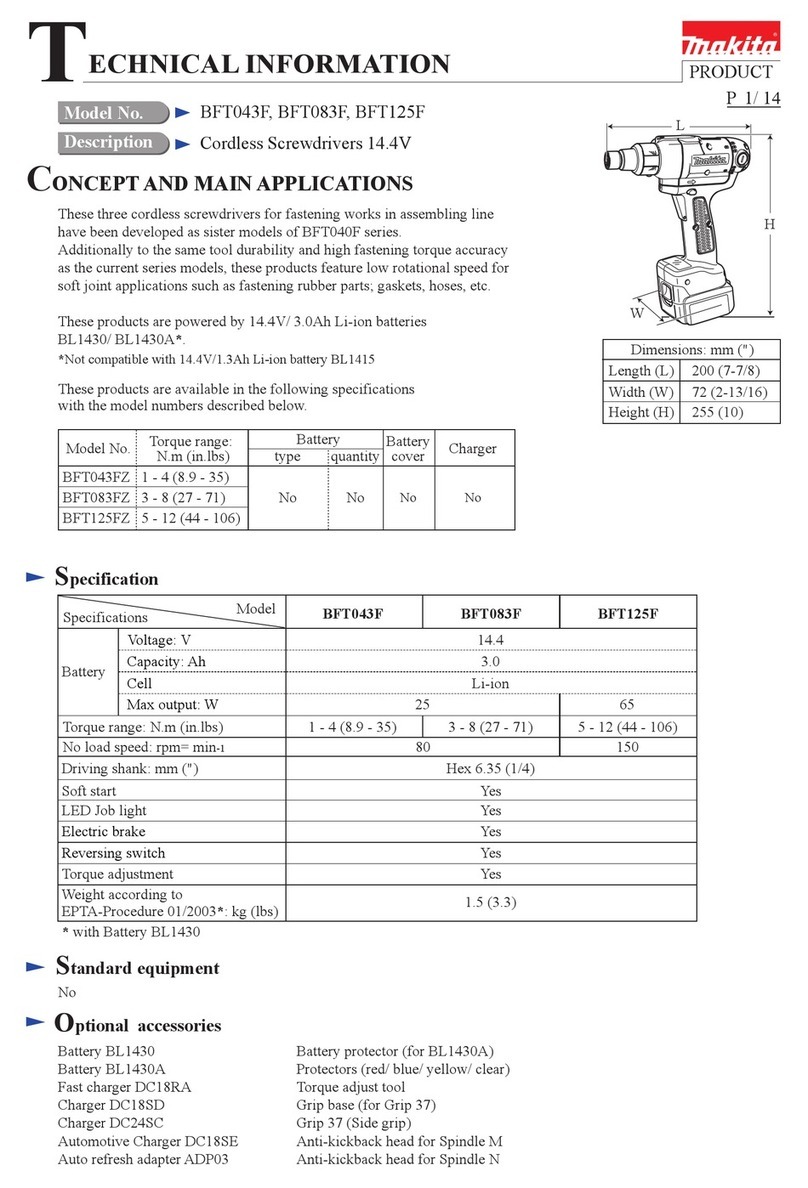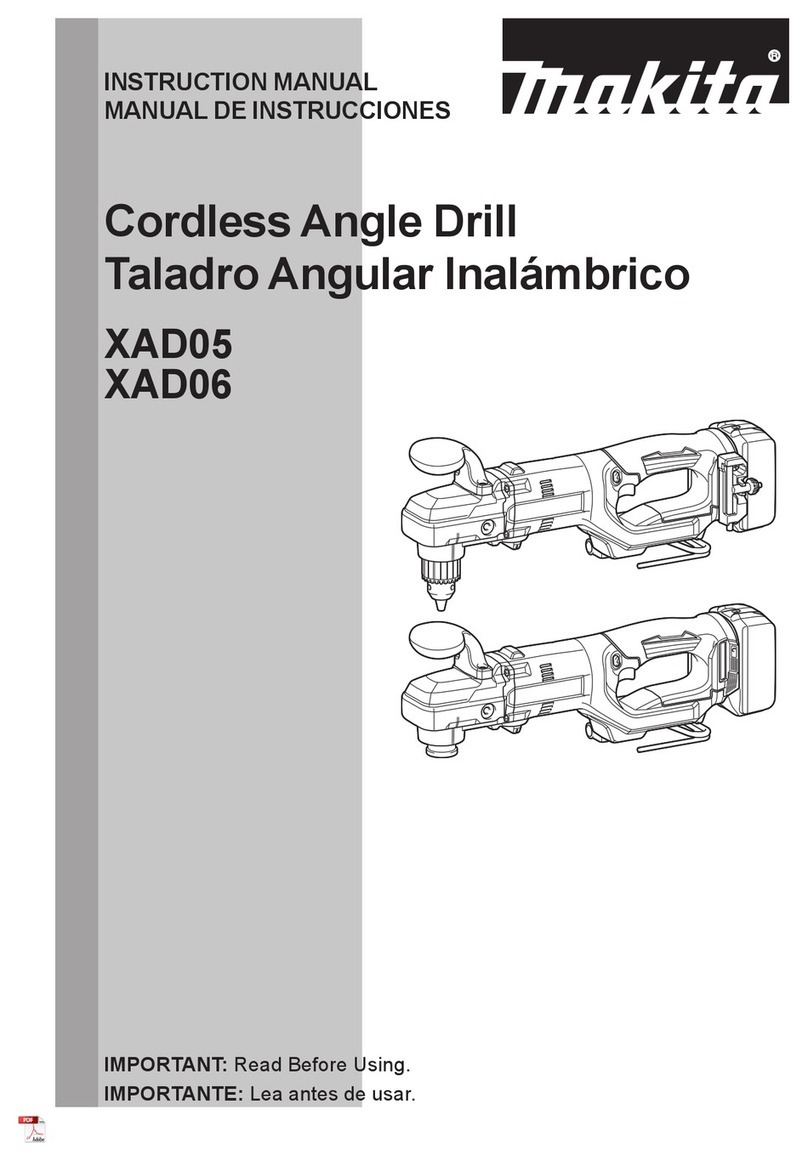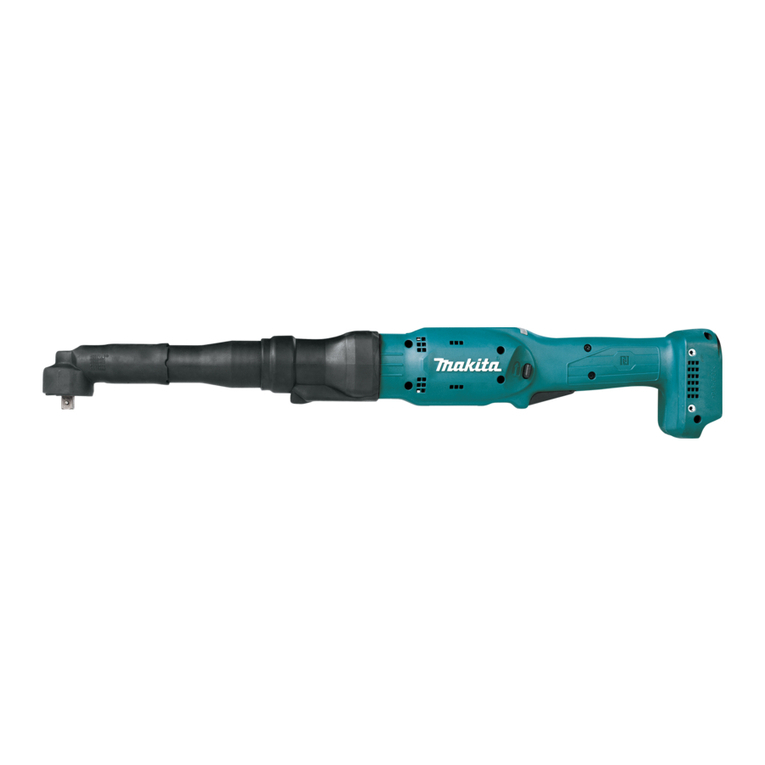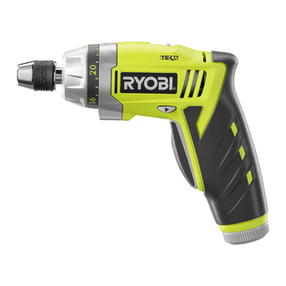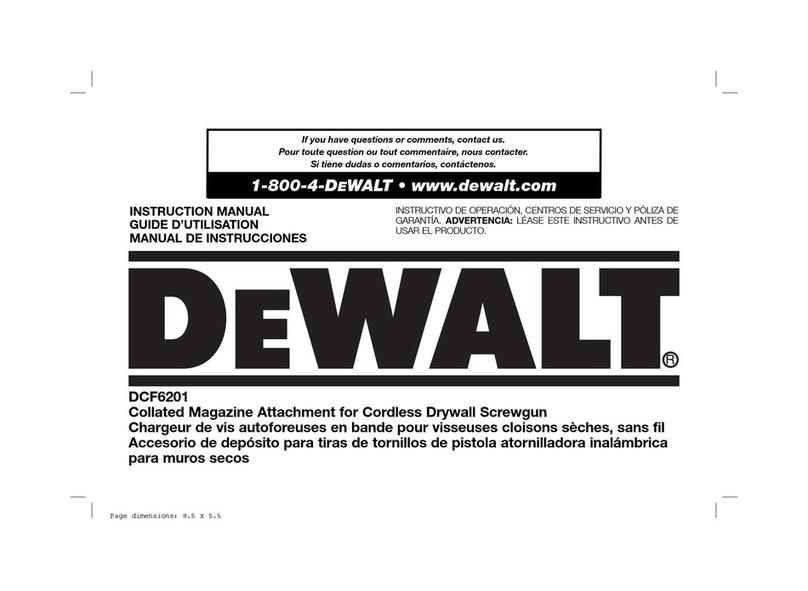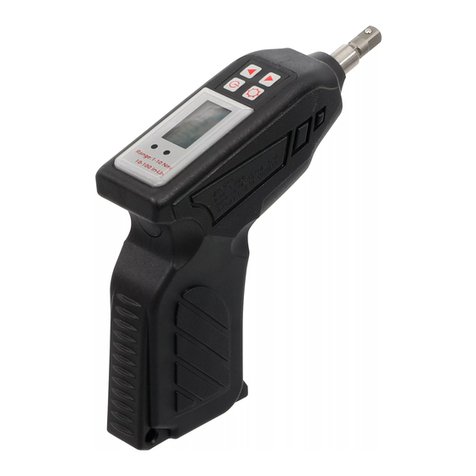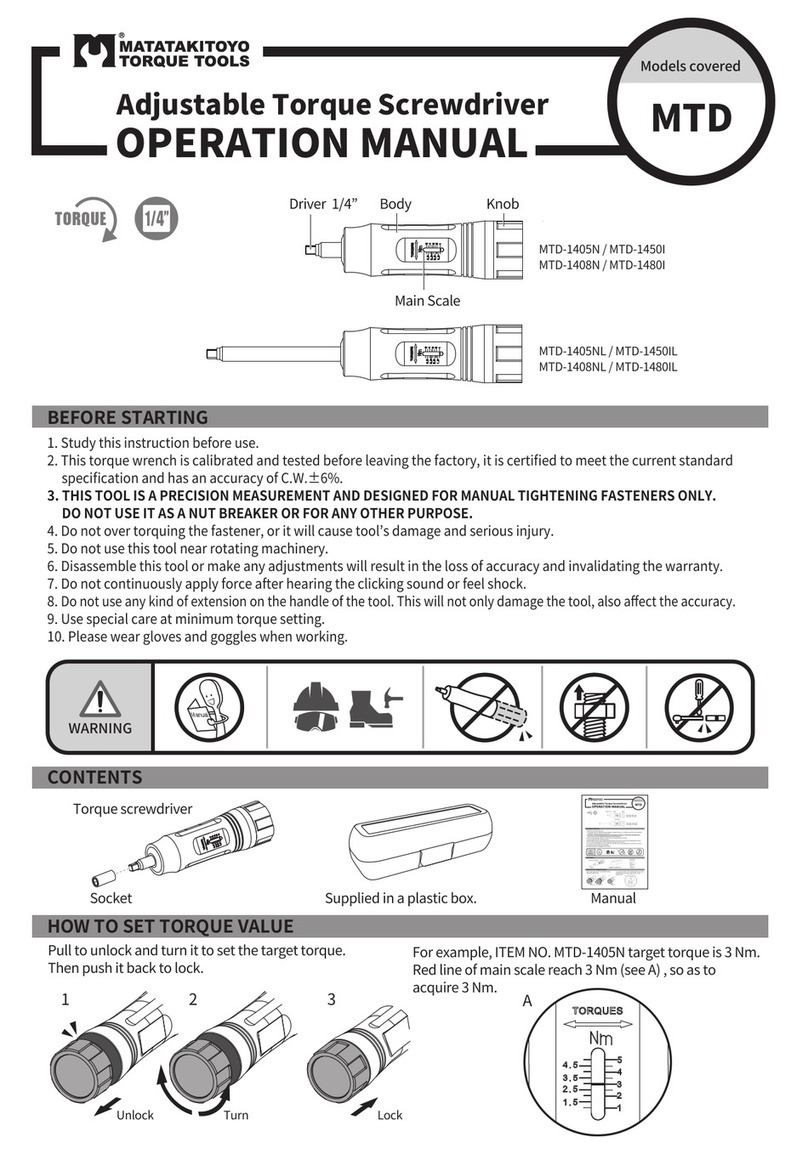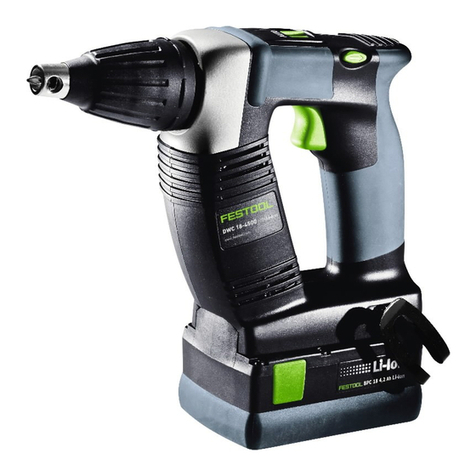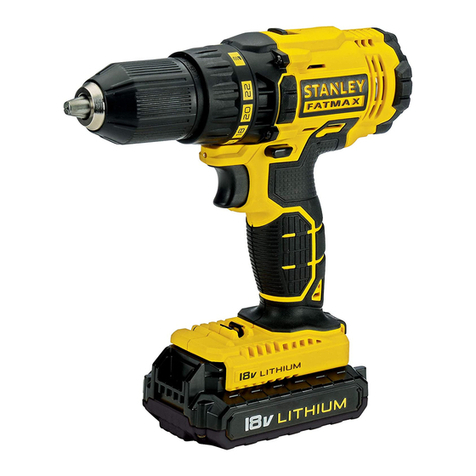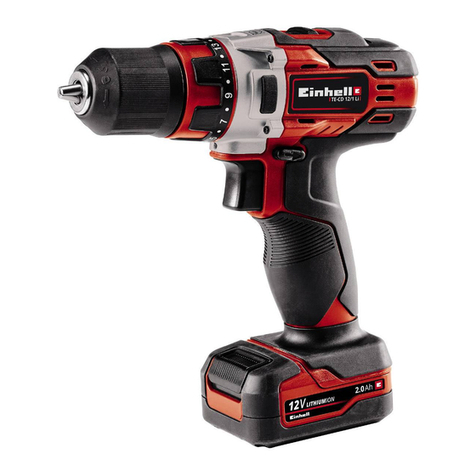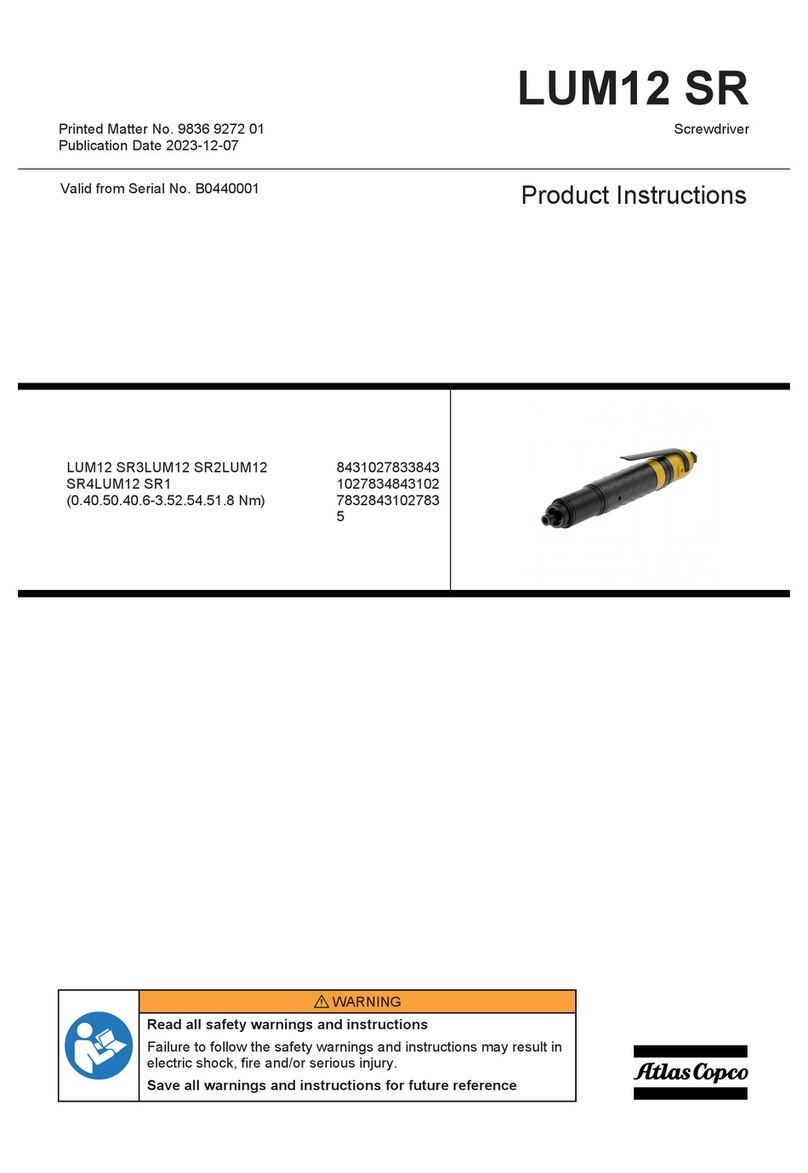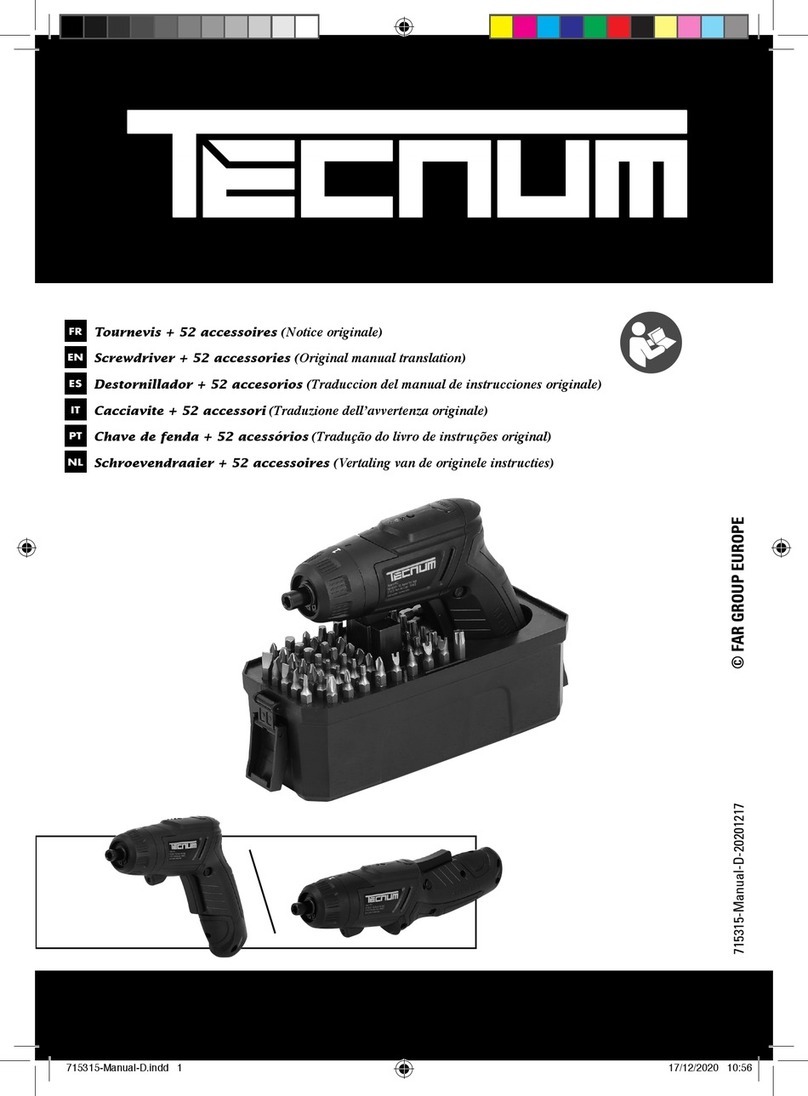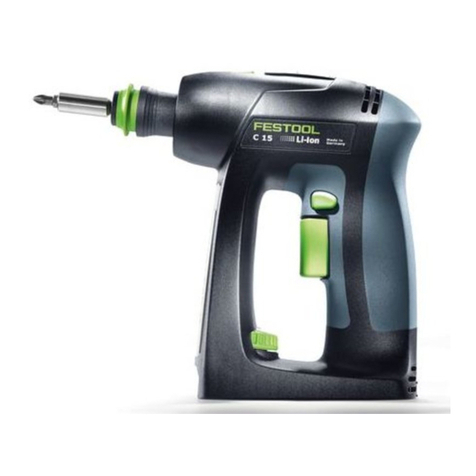
6ENGLISH
6 . Do not store the tool and battery cartridge in
locations where the temperature may reach or
exceed 50 ° C (122 ° F).
7. Do not incinerate the battery cartridge even if
it is severely damaged or is completely worn
out. The battery cartridge can explode in a re.
8 . Be careful not to drop or strike battery.
9 . Do not use a damaged battery.
1 0. The contained lithium-ion batteries are subject
to the Dangerous Goods Legislation require-
ments.
F or c ommerc ial transports e.g. by th ird parties,
f orw ard ing agents, spec ial req uirement on pac k-
aging and labeling must be observ ed .
F or preparation of th e item being sh ipped , c onsult-
ing an ex pert f or h az ard ous material is req uired .
P lease also observ e possibly more d etailed
national regulations.
T ape or mask of f open c ontac ts and pac k up th e
battery in suc h a manner th at it c annot mov e
around in th e pac kaging.
1 1 . When disposing the battery cartridge, remove
it from the tool and dispose of it in a safe
place. Follow your local regulations relating to
disposal of battery.
1 2. Use the batteries only with the products
specied by Makita. I nstalling th e batteries to
non-compliant products may result in a re, exces-
siv e h eat, ex plosion, or leak of elec troly te.
1 3. If the tool is not used for a long period of time,
the battery must be removed from the tool.
SAVE THESE INSTRUCTIONS.
CAUTION: Only use genuine Makita batteries.
U se of non-genuine Makita batteries, or batteries th at
h av e been altered , may result in th e battery bursting
causing res, personal injury and damage. It will
also v oid th e Makita w arranty f or th e Makita tool and
c h arger.
Tips for maintaining maximum
battery life
1 . Charge the battery cartridge before completely
discharged. Always stop tool operation and
charge the battery cartridge when you notice
less tool power.
2. Never recharge a fully charged battery car-
tridge. Overcharging shortens the battery
service life.
3. Charge the battery cartridge with room tem-
perature at 10 ° C - 40 ° C (50 ° F - 104 ° F). Let
a hot battery cartridge cool down before
charging it.
4 . Charge the battery cartridge if you do not use
it for a long period (more than six months).
FUNCTIONAL DESCRIPTION
CAUTION: Always be sure that the tool is
switched off and the battery cartridge is removed
before adjusting or checking function on the tool.
Installing or removing battery cartridge
CAUTION: Always switch off the tool before
installing or removing of the battery cartridge.
CAUTION:
Hold the tool and the battery cartridge
rmly when installing or removing battery cartridge.
Failure to hold the tool and the battery cartridge rmly may
c ause th em to slip of f y our h and s and result in d amage to
th e tool and battery c artrid ge and a personal inj ury .
Fig.1: 1. R ed ind ic ator 2. Button 3. Battery c artrid ge
T o remov e th e battery c artrid ge, slid e it f rom th e tool
w h ile slid ing th e button on th e f ront of th e c artrid ge.
T o install th e battery c artrid ge, align th e tongue on th e battery c ar-
trid ge w ith th e groov e in th e h ousing and slip it into plac e. I nsert it all
th e w ay until it loc ks in plac e w ith a little c lic k. I f y ou c an see th e red
ind ic ator on th e upper sid e of th e button, it is not loc ked c ompletely .
CAUTION:
Always install the battery cartridge fully
until the red indicator cannot be seen. I f not, it may ac c id entally
f all out of th e tool, c ausing inj ury to y ou or someone around y ou.
CAUTION: Do not install the battery cartridge
forcibly. I f th e c artrid ge d oes not slid e in easily , it is
not being inserted c orrec tly .
Checking the remaining battery
capacity (BL1460A)
Fig.2: 1. I nd ic ator lamps 2. C h ec k button
NOTE: D epend ing on th e c ond itions of use and th e
ambient temperature, th e ind ic ation may d if f er sligh tly
f rom th e ac tual c apac ity .
When charging
When the charging begins, the rst (far left) indicating lamp
begins to icker. Then, as charging proceeds, the other lamps
ligh t, one af ter th e oth er, to ind ic ate th e battery c apac ity .
NOTE: If the indicator lamp does not turn on or icker
w h en c h arging, th e battery may be f aulty . I n th is c ase,
ask y our loc al serv ic e c enter.
When using
W h en th e tool is sw itc h ed on, th e lamps w ill ligh t to
ind ic ate th e remaining battery c apac ity . W h en th e tool is
sw itc h ed of f , th e ligh t goes out af ter approx . 5 sec ond s.
W h en push ing th e c h ec k button w ith th e tool sw itc h ed of f , th e ind i-
c ator lamps turn on f or approx . 5 sec ond s to sh ow battery c apac ity .
If the orange lamp ickers, the tool stops because of little
remaining battery c apac ity ( A uto-stop mec h anism) . C h arge th e
battery c artrid ge or use a c h arged battery c artrid ge at th is time.
W h en th e tool is used w ith th e battery th at h as not been
used f or a long time and is sw itc h ed on, no lamps may
ligh t up. T h e tool stops bec ause of little remaining bat-
tery c apac ity at th is time. C h arge th e battery properly .
